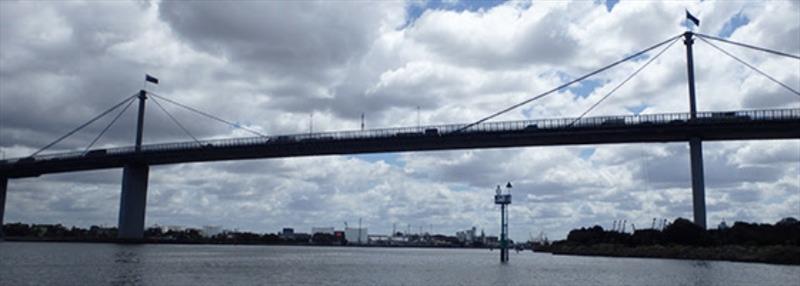
Lessons Learnt: Invisible poison
by Maritime Safety Victoria 1 Nov 2019 12:15 UTC

Yarra River © Maritime Safety Victoria
A group of boaters on the Yarra River suddenly found themselves feeling nauseous and struggling to think clearly.
On the eve of Grand Final Friday in 2019 an enthusiastic owner prepared his 42ft sports cruiser for a trip up the Yarra and an overnight stay on board. While transiting up the bay, the weather was reasonable and the team on board enjoyed canapes and hors d'oeuvres in the shelter of the aft-facing cockpit.
With late afternoon approaching tried to increase speed passing Sandringham Yacht Club, but found that an oil pressure alarm restricted one motor to 1000rpm. This limited their speed and with both motors at 1000rpm, they continued up the bay and into the Yarra at around 10-12 knots.
As they neared Station Pier, the owner began to feel nauseous and started to throw up over the transom. While he was incapacitated, another man took over the helm and the owner's wife went to open the forward hatch to let some fresh air into the saloon downstairs. While downstairs, she was overcome by the atmosphere and had to be assisted back up to the cockpit deck.
The man now at the helm was also feeling queasy and collapsed when he stood up to stick his head out the sun hatch in the cockpit roof. The fourth person was feeling light headed and queasy while sitting on the settee in the cockpit area.
The owner phoned his friends ahead at their intended destination to let them know that they would need assistance to berth and medical assistance. Upon arriving a number of those on board collapsed on the dock alongside the boat and were administered oxygen by the attending emergency services. They were then conveyed to hospital in a fleet of ambulances and treated with oxygen therapy overnight.
What went wrong
- Carbon monoxide (CO) from the engines operating at low speeds directly affected all on board. The 'limp' mode of the engine increased the fuel:air mix being introduced to the engine.
- CO accumulated in the aft-facing cockpit as well as the below-deck accommodation.
- All on board were unable to think clearly and at different stages were rendered unconscious or near unconscious.
- Petrol inboard powered vessels are more likely to produce CO in sufficient concentrations on board to affect health.
Lessons Learnt
- Install a CO alarm: It will indicate raised levels of CO in any living space. An alarm fitted at the helm and in the downstairs accommodation should provide an early warning.
- Improve ventilation: Being aware of the need for ventilation of vessels powered by inboard petrol engines is an important factor for owners and operators to share with passengers.
Read MSV's Safety Alert: CO poisoning